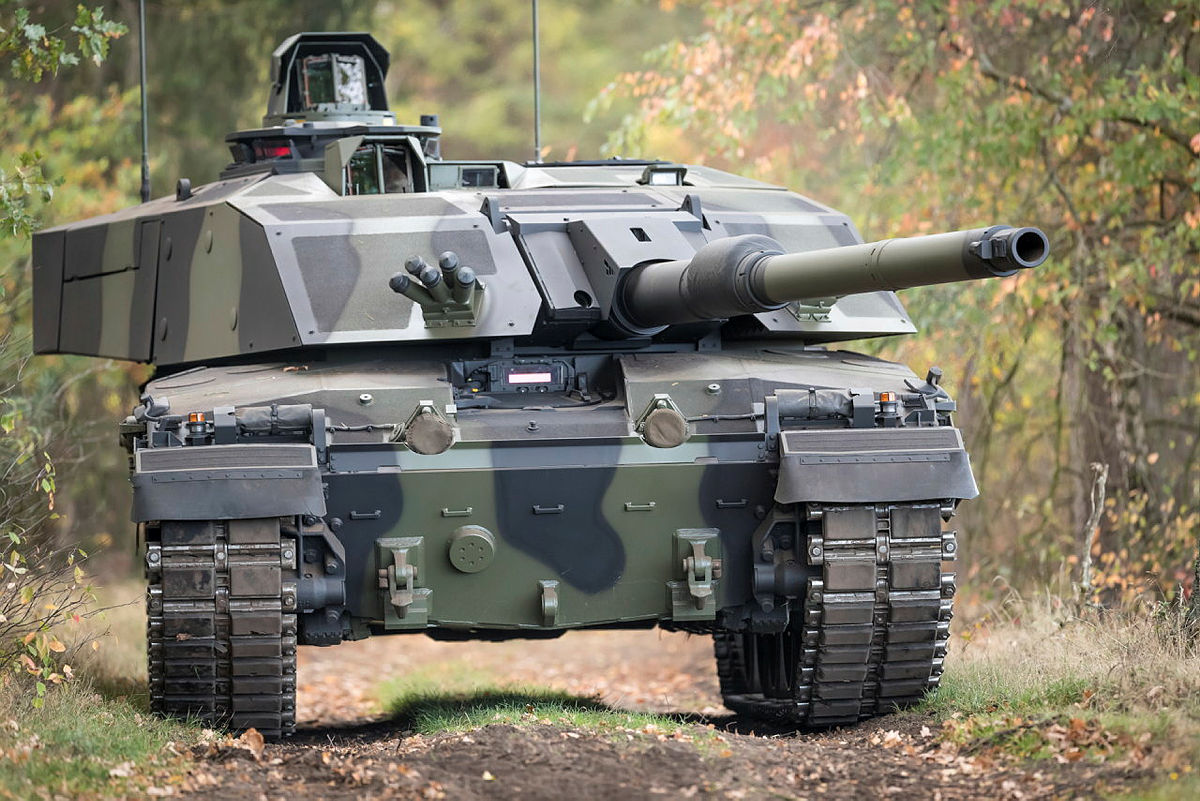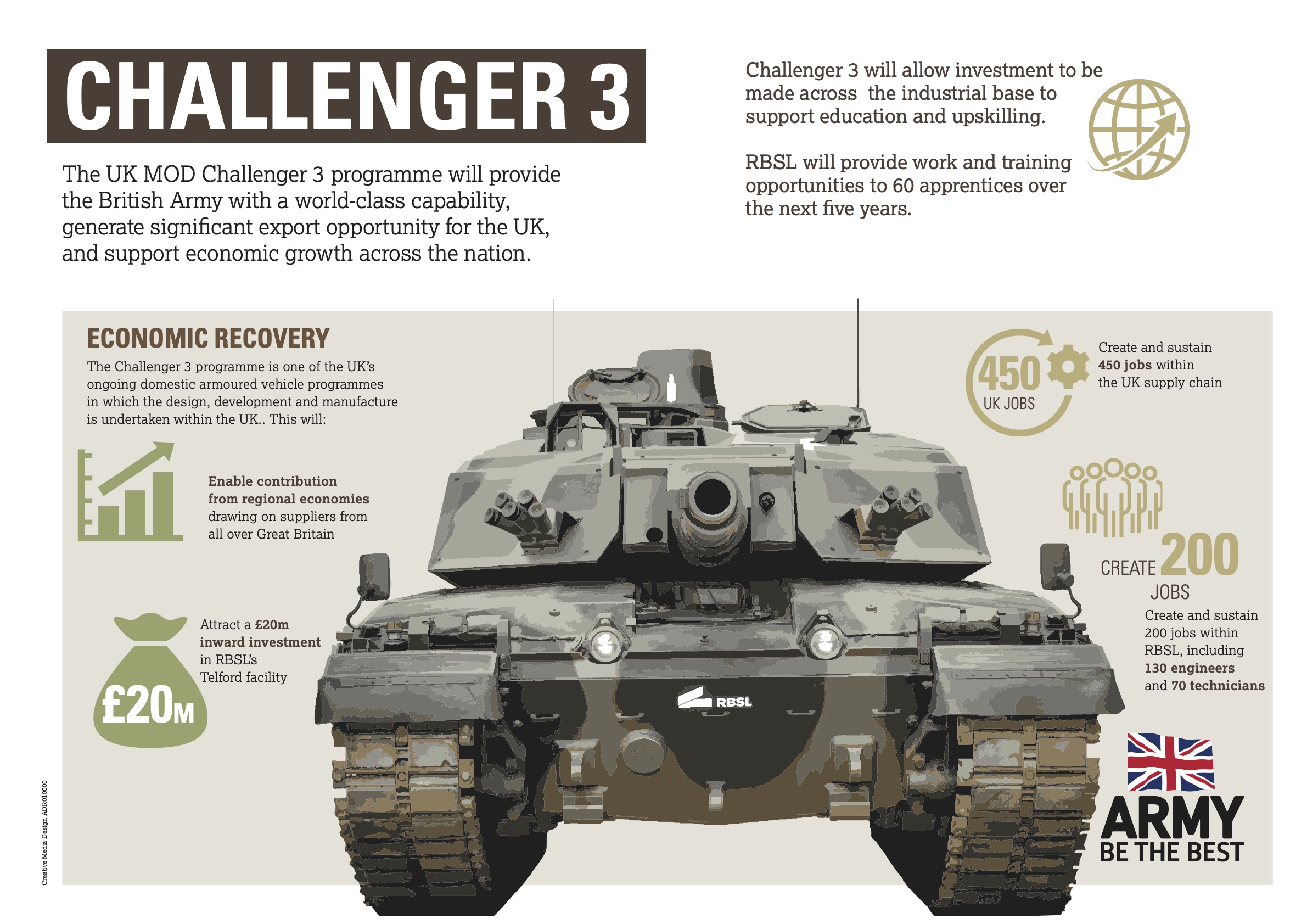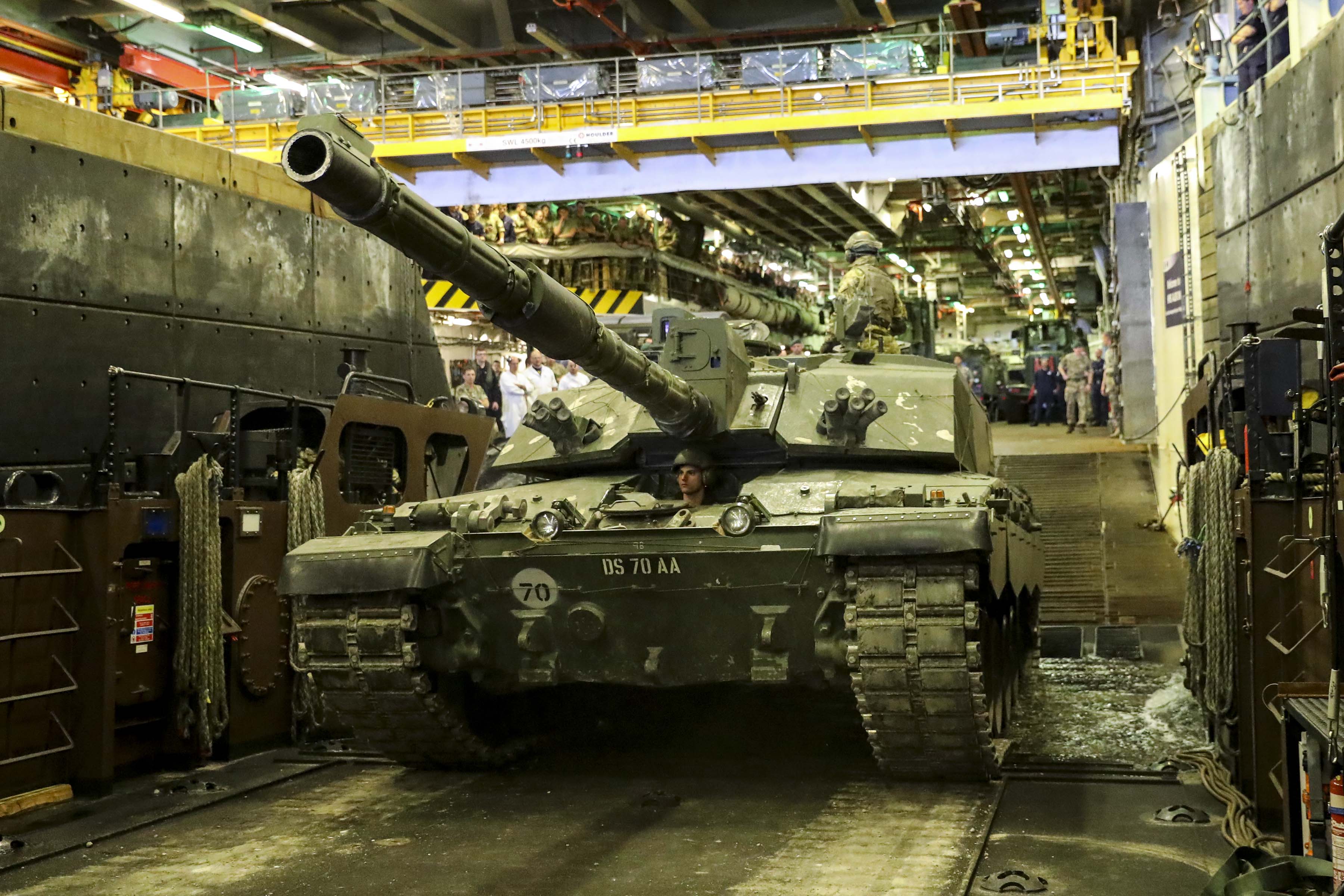The British Army, which has included a steadily dwindling tank force since the end of the Cold War, has begun work on its next-generation main battle tank, or MBT, the Challenger 3 upgrade. While the changing face of land warfare had seen speculation that the United Kingdom might do away with its tanks altogether, the situation in Eastern Europe, in particular, has seen the focus switch back to armored warfare. The 148 Challenger 3s, to be upgraded from existing Challenger 2s at a cost of around $1.3 billion, will be expected to ensure these capabilities remain intact until at least 2040. The Challenger 3 option was selected in favor of buying new off-the-shelf Leopard 2 tanks from Germany.
The British Army has announced that a steel-cutting ceremony to mark the launch of the Challenger 3 upgrade work took place yesterday at Armstrong Works in Newcastle, northeast England. At this facility, Rheinmetall BAE Systems Land (RBSL), the prime contractor for the project, and subcontractor Pearson Engineering are completing the new turrets for the Challenger 3s.

“The turret fabrication being conducted here by Pearson Engineering is crucial for the delivery of a fully digitized turret, ensuring that our modernized main battle tank is the most lethal in Europe,” said Brig. Nick Cowey, the Senior Responsible Officer for the Challenger 3 program. The all-new turrets are the most significant part of the upgrade, but other work addresses the hull, main gun, and various systems.
“The steel structures will house the turret subsystems which will ensure Challenger 3 is a network-enabled, digital main battle tank with state-of-the-art lethality, upgraded survivability, plus world-class surveillance, and target acquisition capabilities,” the British Army added in a media release.
The existing Challenger 2 entered British Army service in 1994 and has served on combat operations in the former Yugoslavia and in Iraq, without loss to enemy action, according to the British Army. Challenger 2s are currently used by four British Army armored regiments: The Queen’s Royal Hussars, The King’s Royal Hussars, The Royal Tank Regiment, and The Royal Wessex Yeomanry. Each of the four regiments operates 56 Challenger 2s, for a total fleet of 224 vehicles.
RBSL is under contract to provide the 148 Challenger 3 upgrades that will serve the British Army as part of its Future Soldier modernization initiative. The first examples of the modernized tanks are expected to be delivered in 2027 and non-upgraded Challenger 2s will be retired. The Future Soldier effort also includes structural changes, based around a “lethal, agile, and lean” force of around 72,500 personnel by 2025, down from 76,000 in 2021, and which will primarily be organized around deployable Brigade Combat Teams (BCTs).
By 2030, the BCTs are expected to operate a range of new land vehicles and aircraft, including Challenger 3s, Ajax infantry fighting vehicles, Boxer wheeled armored personnel carriers, and AH-64E Apache attack helicopter.
The newly rebuilt Challenger 3s will feature a new 120mm Rheinmetall L55A1 smoothbore gun that will replace the current 120mm rifled gun and offer much greater velocity and penetrating power. The new main weapon will be able to fire advanced programmable ammunition and aimed using a new suite of sights with improved day and night targeting abilities.

The modernized tank will feature enhanced protection, including new modular armor and the Rafael Trophy active protection system. The latter employs a radar to detect incoming projectiles before firing intercepting projectiles at them and you can read more about the system here.
As well as being a key part of the upgrade, the new turrets that are now taking shape at Armstrong Works are also intended to be provided for export. While the only other in-service Challenger 2 MBTs are operated by Oman, they could potentially be used to upgrade other types of tanks, too.
Challenger 3 will include what the British Army describes as a new “digitized backbone” that will connect it to other combat vehicles within the BCT, improving the ability to share data with different platforms in real-time.

“The Integrated Review described a transformed Army that will be more lethal, better protected, and better connected than any of its comparators,” explained Lt Gen. Chris Tickell, the Deputy Chief of the General Staff. “Challenger 3 is a manifestation of exactly that change and will sit at the heart of our warfighting capability. Its digital open architecture will ensure that it is integrated across the battlefield, its main armament will overmatch its adversaries and the crew will be afforded a unique level of protection.”
While the upgrade package will bring much-needed improvements to firepower and protection, there remains a question about mobility. After all, considerable extra weight will be added to a vehicle that has already had issues in this regard and there is currently no plan to provide an uprated powerpack. The current Challenger 2 already weighs 82.7 tons with add-on armor modules, compared to 73.6 tons for the U.S. Army M1A2 SEPv3.
The open architecture of the Challenger 3 means it should be easier to upgrade with additional or improved features in the years to come, including responding to new threats on the battlefield. Even in its basic form, the Challenger 3 will feature adaptations that should make it better suited to fighting in less-traditional terrain, including littoral environments in support of the Future Commando Force. Ahead of this, the Challenger 2 has been used to demonstrate how tanks can be moved ashore using existing Royal Navy and Royal Marines amphibious platforms, including in the strategically important Baltic region.

Once fielded, the Challenger 3 will come under the new-look Land Operations Command in which they will be assigned to the 3rd (UK) Division, the British Army’s primary warfighting formation. Under the latest plans, the division will have two modernized heavy brigades, built around 148 Challenger 3 tanks plus Ajax armored reconnaissance vehicles, and Boxer armored personnel carriers.
While the British Army points out that the Challenger 3 program is currently on track, there may still be hurdles ahead and the service will be desperate to avoid the problems — including excessive noise and vibration — that have bedeviled the Ajax armored fighting vehicle program.
In particular, the Royal United Services Institute (RUSI) has identified potential pitfalls in the Challenger 3 relating to the choice of ammunition for the main armament, and how long it will take for this to be fully operational, as well as possible difficulty in the integration of the Trophy active protection system.

Perhaps the biggest question mark over the program, however, involves the relatively small number of tanks that will be produced and fielded. The experiences of Russian and Ukrainian armored units in the ongoing war in Ukraine starkly highlight just how vulnerable even relatively advanced MBTs can be when confronted by modern anti-tank guided missiles, in particular.
The Ukrainian Ministry of Defense claims that the Russian military lost 389 of its 2,927 main battle tanks in the first 17 days of fighting in Ukraine. Ukrainian President Volodymyr Zelenskyy has also recently called on allies to provide his forces with additional tanks, suggesting predictions of the demise of the MBT are premature, to say the least.
With the British Army reducing its MBT numbers from 227 to 148, it’s been argued that the service could quickly be out of tanks altogether if involved in a conflict of similar intensity to the war in Ukraine. By way of comparison, back in the 1980s, the British Army fielded around 900 tanks.
A 20-year veteran of the Royal Tank Regiment, Lt. Col. Stuart Crawford told The Times that the British Army was now “hopelessly under-equipped. They [tanks] are so few in number and there are no reserves.”
“The Royal Armoured Corps is now a ‘use once only’ asset,” he added, “because we have no replacement tanks to re-equip it.”
What’s more, the response to the challenges presented by a much more aggressive Russia means that the smaller MBT force will have to be spread more thinly, with at least a portion of them returning to Germany, from where they had previously been withdrawn. Ultimately, the German base at Sennelager will be one of three regional hubs for the British Army, with others in Kenya and Oman.

At this stage, it’s unclear how many tanks will go to Germany, but officials are already talking about a “substantial number” of armored vehicles being deployed at Sennelager as part of a brigade-sized force that will be better able to respond to contingencies in Eastern Europe.
With limited defense budgets available and other big-ticket programs to fund, including aircraft carriers and F-35B stealth jets to operate from them, the United Kingdom has chosen not to give up its tanks entirely, but to concentrate on a much smaller force of undoubtedly highly capable fighting vehicles, providing they work as advertised. Only time will tell if that was the right approach.
Contact the author: thomas@the drive.com
